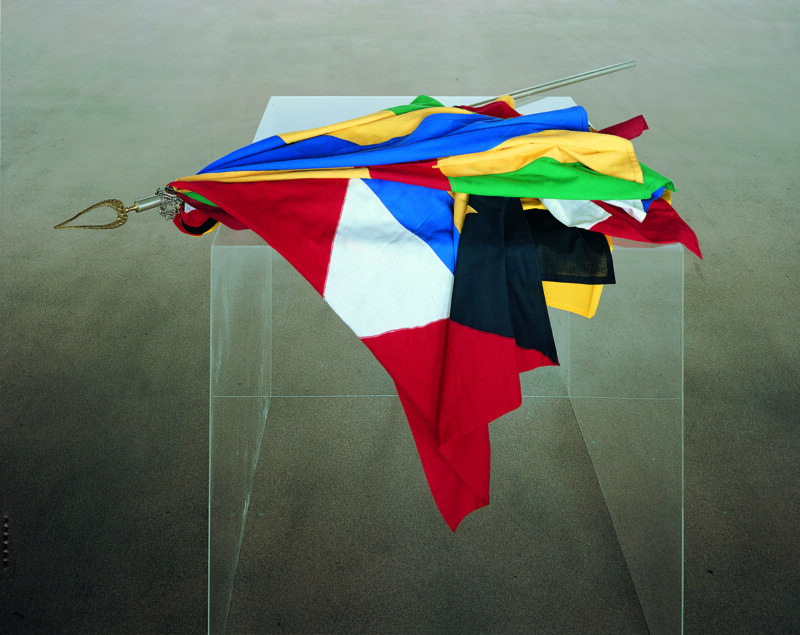The Wits Art Museum in Johannesburg celebrates Arte Povera between Italy and South Africa
On September 27, 1967, in Genoa, at the La Bertesca Gallery, Germano Celant unveiled the exhibition “Arte Povera Im-spazio,” during which he coined the term “Arte Povera.” In the catalog, he described it as the linguistic process of certain Italian artists, stating that it involves “removing, eliminating, reducing to the bare minimum, impoverishing signs to reduce them to their archetypes.”
Fast forward 55 years, and the dual exhibition project titled “Arte Povera and South African Art: In Conversation” is set to celebrate the origins of the Arte Povera movement. The initiative is promoted by the Consulate General of Italy in Johannesburg at the Wits Art Museum in Johannesburg from October 31 to December 9, with two key objectives: firstly, to delve into the roots of Arte Povera in the African continent, and secondly, to explore its influence beyond national borders, specifically in South Africa.
This two-fold project brings together two interconnected components: the exhibition “Arte Povera 1967-1971,” curated by Italian curator Ilaria Bernardi, and the exhibition “Innovations in South African Art, 1980s-2020s,” curated by South African curator Thembinkosi Goniwe.

“Arte Povera 1967-1971,” curated by Ilaria Bernardi, marks the first-ever exhibition of Arte Povera on the African continent and the first of its kind since the passing of its theorist, Germano Celant, in 2020, adding significant historical value. The exhibition brings together works by the 13 artists considered canonical figures of Arte Povera: Giovanni Anselmo, Alighiero Boetti, Pier Paolo Calzolari, Luciano Fabro, Jannis Kounellis, Mario Merz, Marisa Merz, Giulio Paolini, Pino Pascali, Giuseppe Penone, Michelangelo Pistoletto, Emilio Prini, and Gilberto Zorio.
Rather than presenting a general retrospective of these artists’ work, curator Ilaria Bernardi has opted for a more original approach, one that captures the vibrancy and dialogue among artists and their works during the late 1960s. The exhibition at the Wits Art Museum showcases works primarily dating from 1967, the year Celant coined the term “Arte Povera,” to 1971, the year he proposed that the label of Arte Povera should dissolve so that each artist could assert their individuality. The aim is to explore the early phase of this “poor” art movement while identifying the common denominators that led Celant to define it as such. As a result, the exhibition includes some works created in the years immediately before 1967. Alongside the artworks, the exhibition incorporates an extensive photographic and documentary component to provide a chronological, historical, and critical understanding of Arte Povera and the artists’ explorations.

“Innovations in South African Art, 1980s-2020s,” curated by Thembinkosi Goniwe, focuses on the trajectory of experimentation, discovery, and improvisation within a selected group of South African artists. Their work is rooted locally but oriented internationally in their parallel, overlapping, and intersecting visual explorations akin to the Arte Povera movement. The artists featured in the exhibition include Jane Alexander, Willem Boshoff, Bongiwe Dhlomo-Mautloa, Kay Hassan, David Thubu Koloane, Moshekwa Langa, Bill Mandindi, Senzeni Marasela, Kagiso Pat Mautloa, Thokozani Mthiyane, Lucas Seage, Usha Seejarim, and Kemang Wa Lehulere.
In line with the policies and goals of the Italian Ministry of Foreign Affairs and International Cooperation, and building on the efforts of the Italian Embassy in Pretoria and the Consulate General of Italy in Johannesburg in recent years, the “Arte Povera and South African Art: In Conversation” project aims to strengthen the cultural bonds between Italy and South Africa. It promotes intercultural dialogue and the exchange of experiences between these two geocultural regions through the universal language of art. The project highlights the implicit dialogue between Italian and South African art to demonstrate how cultural exchange is essential for productive transnational artistic development.

The project “Arte Povera and South African Art: In Conversation” will be accompanied by an illustrated catalog, published by Silvana Editoriale, featuring bilingual text (Italian/English) that can be read from both ends. The first section of the catalog will be dedicated to the Arte Povera exhibition curated by Ilaria Bernardi and will include an extensive essay by her, in-depth information about the works and the 13 artists, and a timeline of the most significant Arte Povera exhibitions from 1967 to the present day. The second section will focus on the exhibition curated by Thembinkosi Goniwe and will include an essay by him, along with details about the South African artists and their works.
This project, hosted at the Wits Art Museum to celebrate 55 years since the coinage of the term “Arte Povera” by Celant on September 27, 1967, signifies a homage to the leading artists of the movement and lays the groundwork for a deeper understanding of the influence their works have had on South African art. The curatorial choice of comparing the two exhibitions – “Arte Povera 1967-1971,” curated by Ilaria Bernardi, and “Innovations in South African Art, 1980s-2020s,” curated by Thembinkosi Goniwe – encapsulates the essence of this initiative. This project goes beyond a simple celebration; it paves the way for a profound exploration of the shared artistic experiences and influences across continents, paying homage to Arte Povera’s pioneering spirit and the enduring impact it has had on the global art landscape.




